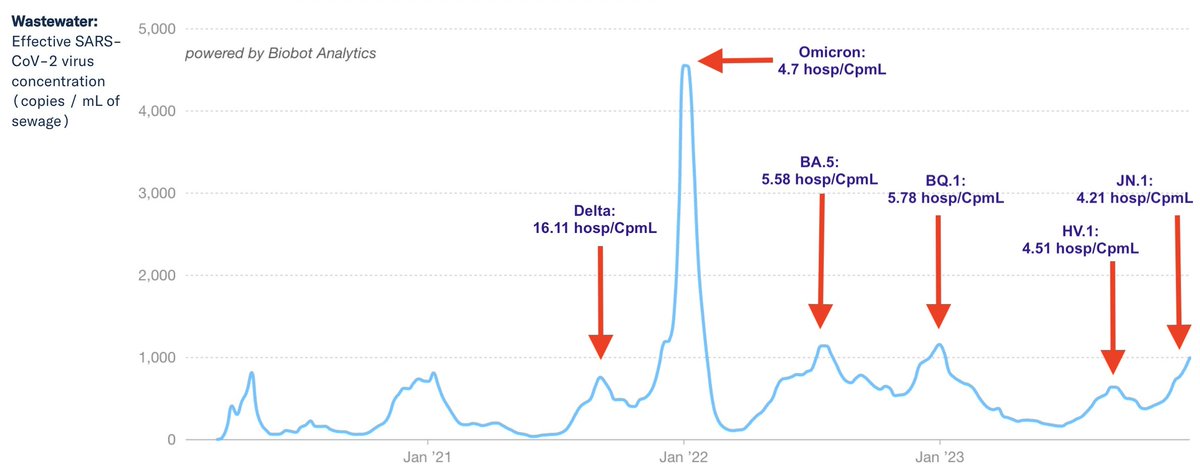42-1/ COVID update for epidemiological weeks 41-42 of 2024.
COVID is down down down—at least in the US. And my bad, Biobot hasn't switched to a monthly report. They still seem to be reporting weekly. My neuro-atypical mind missed the dropdown report menu button.

COVID is down down down—at least in the US. And my bad, Biobot hasn't switched to a monthly report. They still seem to be reporting weekly. My neuro-atypical mind missed the dropdown report menu button.


42-2/ COVID ED visits are following the downward wastewater trend. Although there may be delays in tabulation, weekly deaths (per 100k) may clock in at the lowest any time since the start of the pandemic. Hospitalizations dropping, too. 



42-3/ Lots of scary stories in the MSM that XEC will bring on the next COVID wave RSN (Real Soon Now). Its frequency is growing, but so far it hasn't stopped the downward trend in cases (at least in the US). Its frequency *is* growing fast, though. 



42-4/ While US numbers are dropping, some countries are on the rise—Germany, for instance. And the Netherlands. Driven partially by XEC... 


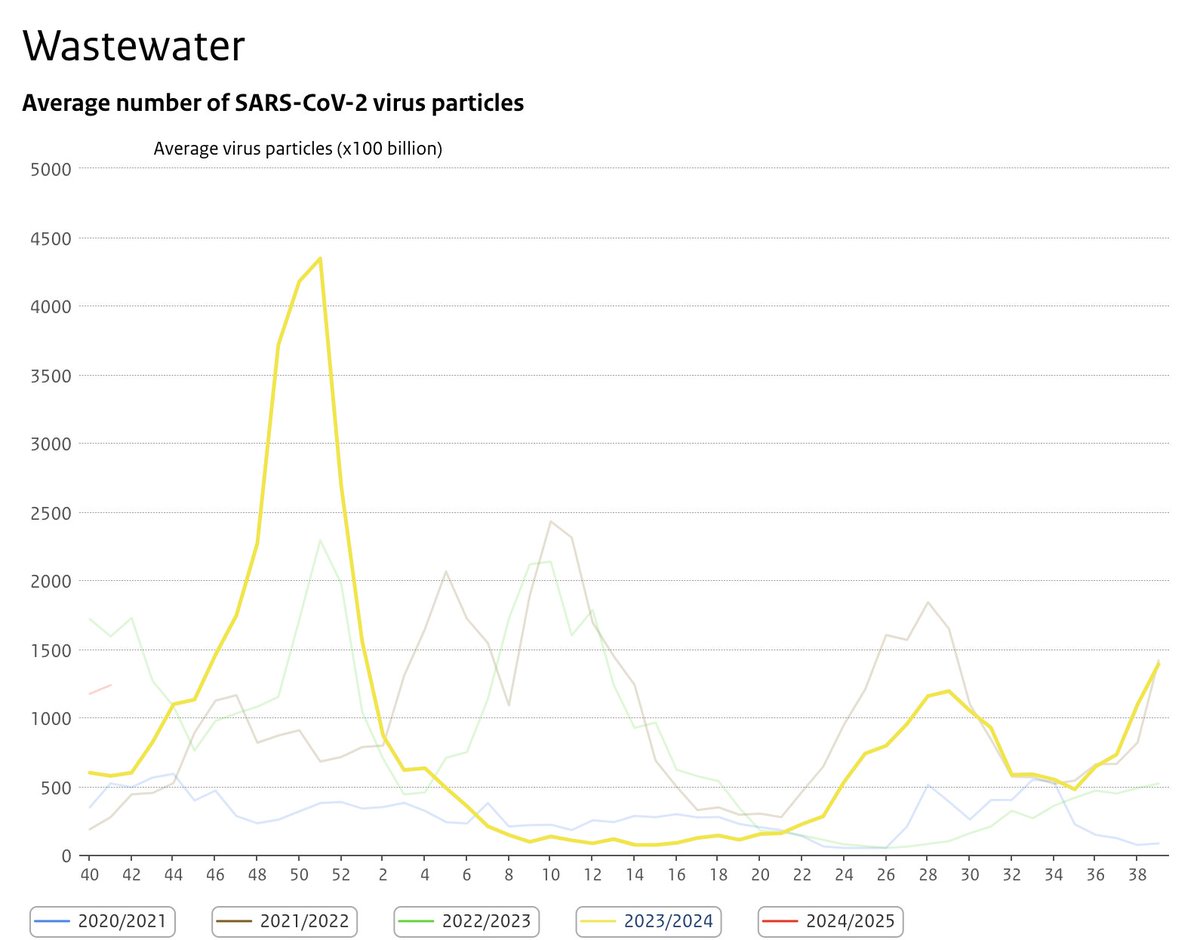
42-5/ XEC is close to 50% in Germany a few weeks ago. And ~35% in the Netherlands. Notice that they're not coming off a wave like we are. I'm guessing that the current 3 XEC.x variants will not kick off the next wave in the US. Maybe their descendants will, though. 

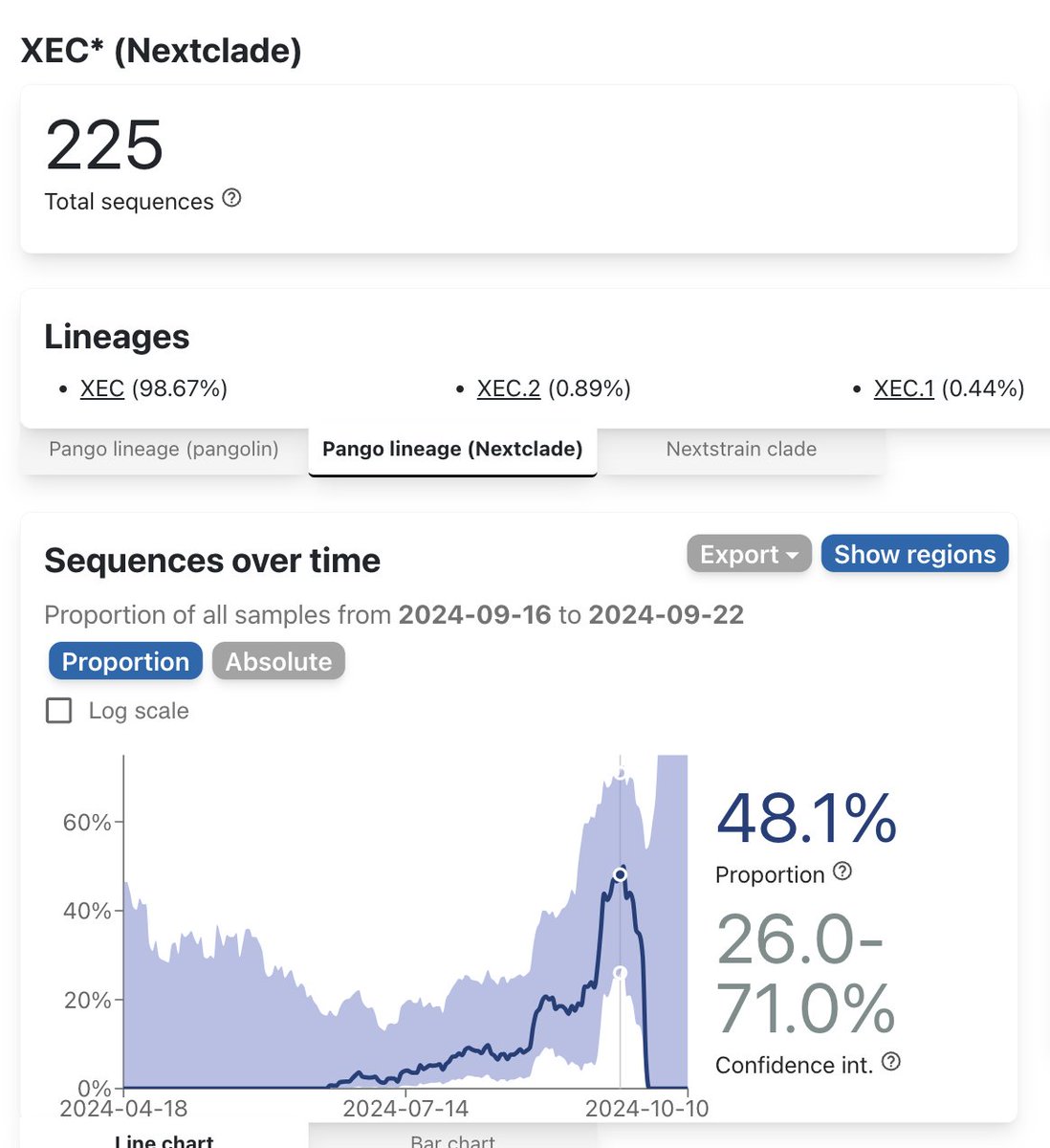
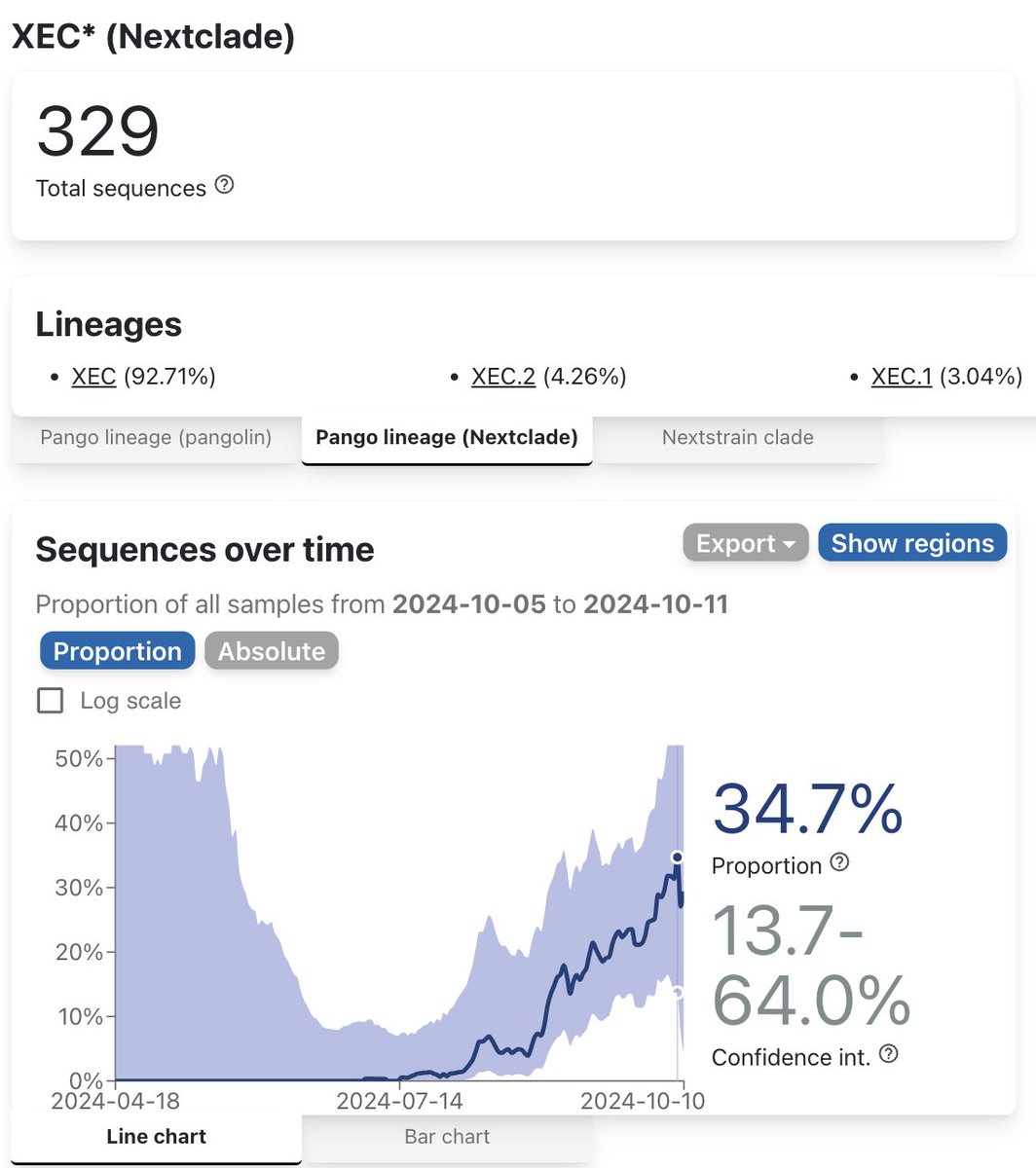
42-6/ OTOH, down under in Australia, their COVID hospitalizations are lower than ever. Not much wastewater testing happening in AUS, but in the greater Sydney area, WW numbers remain relatively low. NSW respiratory notifications show same pattern for COVID. 


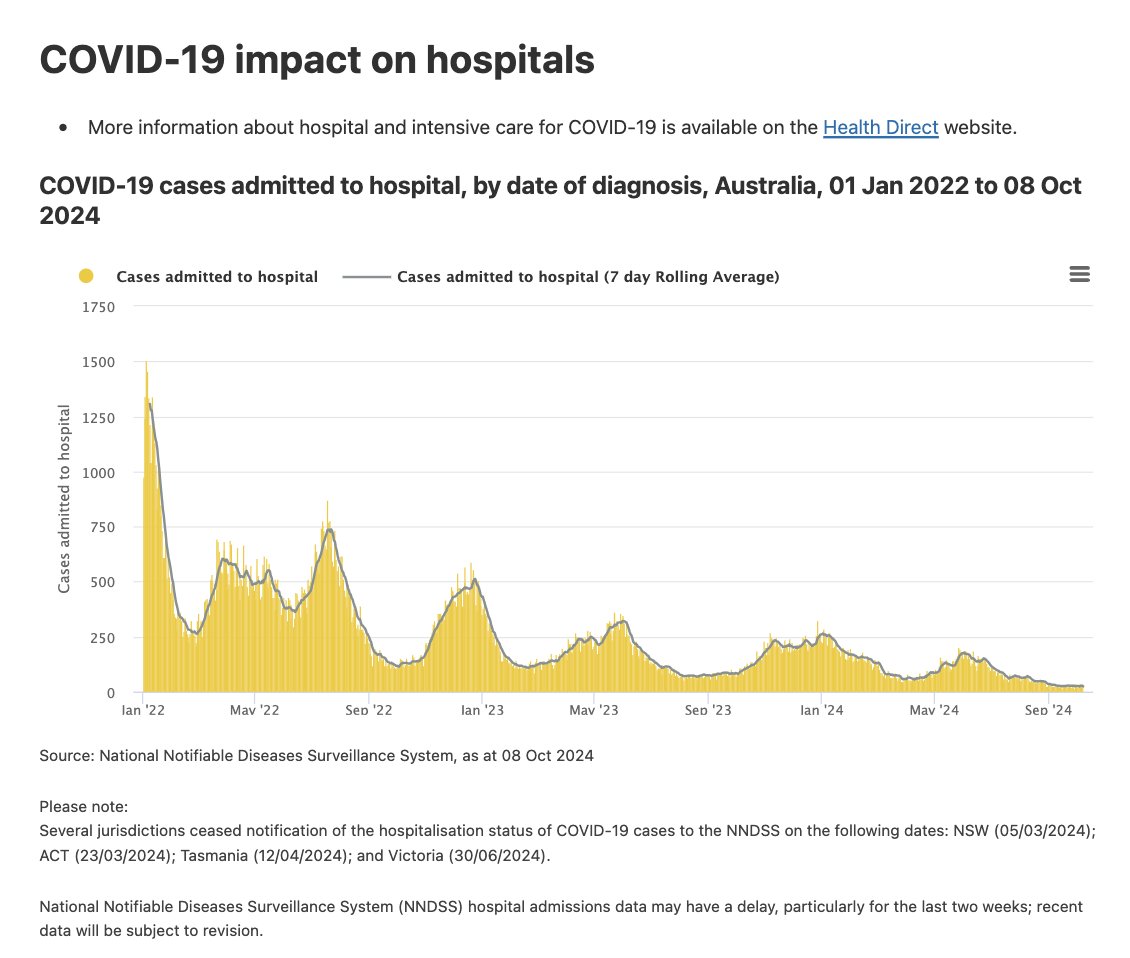

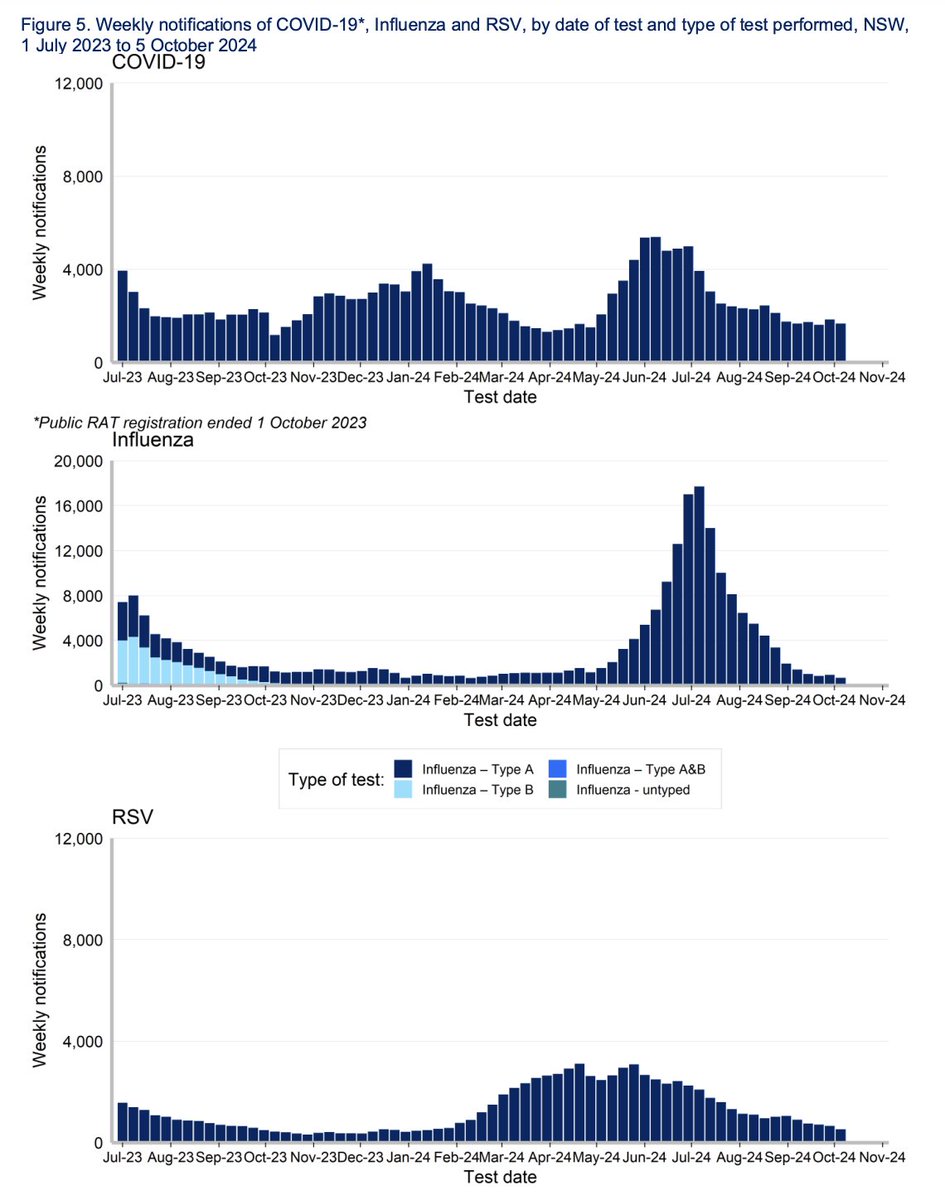
42-7/ As for other respiratory viruses in the US, I'll start with hCoVs because a reader asked: "Will SARS-CoV-2 become as common as OC43?" If we look at Biofire's (proprietary) Syndromic Trends, SARS2 has always been the big kahuna of coronaviruses. OC43 on the rise though… 

42-8/ The big question is whether SARS2 will become as harmless as hCOV cold viruses. @arijitchakrav thinks it won't. I was going to link to his thread where he argues it won't, but he blocked me for calm mongering. But I'd say if current trends continue, it will eventually.
42-9/ Flu season seems to be delayed in the US. But the flat line in the WHO positivity numbers is weird. However, Biofire shows that the incidence of flu viruses is still very low—but is that the start of a slight uptick in A H3 influenzas? 



42-10/ And since I'm on Biofire, Rhinoviruses seem to have peaked. Hmmm. But if the (loose) inverse correlation between RVs and SARS2 holds, we might see an uptick in SARS2 sooner than later.
And RSV rates are starting to rise...

And RSV rates are starting to rise...


42-11/ That's all for this update. I've got a few interesting papers that I need to read in the hopper (including a big masking metastudy). I'll report back on them in my Epi Week 44 update. Oh, and get your COVID booster! And your flu shot, too (if you haven't already done so).
@threadreaderapp unroll
• • •
Missing some Tweet in this thread? You can try to
force a refresh





























